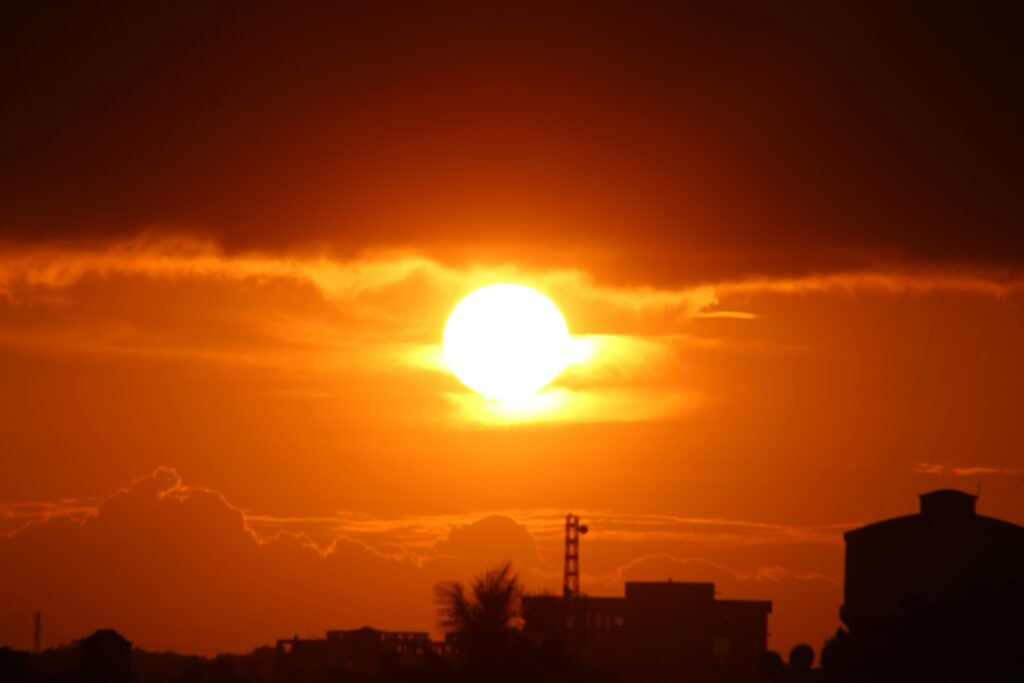Matthew Wielicki warns that “It’s Almost Summer... Let the Heatwave Hysteria Begin.” And on cue MSN retails a Canadian Press story “Get ready for several years of killer heat, top weather forecasters warn”. Yes, the folks who can’t see a week ahead are making multi-year forecasts. Sunny with a chance of Killer. It starts “Get ready for several years of even more record-breaking heat that pushes Earth to more deadly, fiery and uncomfortable extremes, two of the world’s top weather agencies forecast.” Which are identified as the WMO and the British Met, both of whom put out press releases but only the WMO actually released a study. And the rest of the story is bunk of a tiresome sort, not least because it doesn’t contain even a hint of skepticism about the official story, about how temperatures are measured and so on. Once upon a time the average newspaper was a daily skeptic. Nowadays they read like Pravda. And they wonder why people are losing faith in them.
As Chris Morrison just wrote for the Daily Skeptic, during a pleasant British spring and yes they do occasionally have them, “The Met Office has been out in force colouring the maps orange and declaring ‘extreme’ highs all over the green and pleasant land” with the vast majority coming from a handful of places that are “poorly located next to unnatural heat sources and were producing a false natural air record”.
There’s something a bit anticlimactic, or overcooked, about “deadly, fiery and uncomfortable” weather since fiery deaths are rarely comfy. And among its egregious rhetorical faults, the MSN/CP/AP story predictably goes fishing in the echo chamber instead of seeking a single contrary or even cautious voice, then waves fishiness at us:
“‘Higher global mean temperatures may sound abstract, but it translates in real life to a higher chance of extreme weather: stronger hurricanes, stronger precipitation, droughts,’ said Cornell University climate scientist Natalie Mahowald, who wasn’t part of the calculations but said they made sense. ‘So higher global mean temperatures translates to more lives lost.’”
Except for the century-long trend towards fewer lives lost to extreme weather. So unless you’re saying thus far it hasn’t gotten warmer, or that it did but it was good while further warming will be bad because shut up! Climate change! it’s hard to understand what is being said. Alas, the journalist apparently didn’t know about that inconvenient data.
Instead more people from the chorus were contacted and sang on cue and in harmony:
“With every tenth of a degree the world warms from human-caused climate change ‘we will experience higher frequency and more extreme events (particularly heat waves but also droughts, floods, fires and human-reinforced hurricanes/typhoons),’ emailed Johan Rockstrom, director of the Potsdam Institute for Climate Impact Research in Germany. He was not part of the research.”
And a good thing too, since if every tenth of a degree of warming causes the weather to become discernibly more hideous, and we’ve had 12 or 15 of them since 1850, we should already be clinging to a burning raft in the middle of a flooded desert and it’s hard to see how it could get worse. And impossible to explain why fewer and fewer people are actually dying as opposed to doing it rhetorically.
As for “There’s an 86% chance that one of the next five years will pass 1.5 degrees and a 70% chance that the five years as a whole will average more than that global milestone, they figured”, with them being “the two agencies”, what if someone says “No, it’s 83%”? How would you even discuss it? But if you can’t, that 86% is mathiness, an intimidatingly exact but irritatingly spurious feigning of precision.
Indeed, over at Statista, where they recently blared “The World’s Record Heat Waves”, in addition to saying it’s now hot in India and Pakistan in the spring and didn’t use to be, which would surprise Victorian Colonial Office personnel, a claim is spelled out that:
“According to NASA, there is ‘unequivocal evidence that Earth is warming at an unprecedented rate’. Meanwhile, data from Copernicus, the European Earth Observation program for the European Space Agency, shows that July 22, 2024 was the world’s hottest daily global average temperature since the institution’s records began in 1940 (hitting 17.16°C).”
Point 0.16. Indeed. And pray tell, what was the temperature in rural eastern French West Africa in 1818 to two decimal places and how do you know? Or do you just believe anything a left-wing government agency tells you?
Oh, and if you’re wondering where the two agencies supposedly said what the opening “killer heat” says they said, well, don’t expect a modern news story to contain a hyperlink to a key document or anything new-fangled of that sort. But the actual study is easily found here, here and especially here and though it bears the logos of the Barcelona Supercomputing Centre, the Canadian Centre for Climate Modelling and Analysis, the Deutscher Wetterdienst and the Met Office, all of whom apparently helped cook up the numbers (though not alone; “there are 220 ensemble members from models contributed by 14 different institutes”), it is only a WMO publication. So there’s one obvious thing the story got wrong.
Here’s another. The WMO paper does not contain the word “deadly”. Or “killer”, let alone “killer heat”. Or “fiery”.
Or “hurricane”. Or “extreme”. Need we go on? For instance no instance of “record-breaking”. Or “drought”. Its actual predictions are that it will stay warm (“Annually averaged global temperatures are likely to continue at or near record levels in the five-year period 2025-2029 and stay well above annual mean temperatures seen in the last 60 years”) and maybe get a bit warmer (“The chance of at least one year exceeding the warmest year on record, 2024, in the next five years is 80%.”). But as we’ve pointed out 2024 is not the warmest year on record, even within the Holocene, so we’re dealing with advocacy wearing a scientific beard within the WMO passing notes to advocacy wearing journalistic shades outside it.
It may have been the warmest year in the modern thermometer record. But we doubt it, because you only get that result if you decide to ignore the best actual thermometer records from the United States because it annoys you that they show 1936 as the record holder, whereas temperature “records” for much of the world’s land and almost all of its ocean in 1936 are inventions by people who were convinced before they started that those numbers had to be lower than today. But of course neither the news stories nor the report address the relevant concerns and caveats about, say, the lack of actual measurements in most of the world in the 1930s, how the interpolations are done, or the UHI problem Wielicki focuses on.
For instance, an unrelated news story from an NBC affiliate trying to debunk the hot 1930s claim shows a scary yellow, orange and especially dark red chart of “NASA GISS Temp: 2010 to 2023 Minus 1930 to 1939” worldwide, with it massively hotter in Central Asia, the Arctic and eastern Brazil. To which we say “Bosh”. You have no idea how hot it was in Central Asia in June 1936. Literally none. And having a very strong idea what it must have been is not a substitute.
To its credit, Heatmap got part of the story right, calling it “a new report from the World Meteorological Organization (WMO)” which it actually was. But their newsletter said:
“The global average temperature is expected to ‘remain at or near’ the 2-degree Celsius threshold within the next five years, the World Meteorological Organization shared in a new report Wednesday morning. The 2015 Paris Climate Agreement set a warming limit to under 2 degrees C above pre-industrial times…”
Whereas the actual WMO press release they link to instead said:
“The WMO report forecasts that the annually averaged global mean near-surface temperature for each year between 2025 and 2029 is predicted to be between 1.2°C and 1.9°C higher than the average over the years 1850-1900.”
So not at 2C, and with that wide a range of uncertainty even “near” is wildly misleading.
In the end, of course, the proof of the pudding is in the eating. If it gets measurably hotter, without further adjustments of the numbers and without measuring it at airports, then they were right. If not, they were wrong.



The climate geeks keep on chopping, but no chips are flying! Same BS, different day. Meanwhile here in Wisconsin we are having a cool spring with moderate precipitation, the plants are digging it and so is my AC bill (which has been turned on once during 2025 to date) and the forecast is for mid 70s for days to come! However, I do wish to register a complaint with Canada, your smelly forest fires are lousing up our typically clean air!